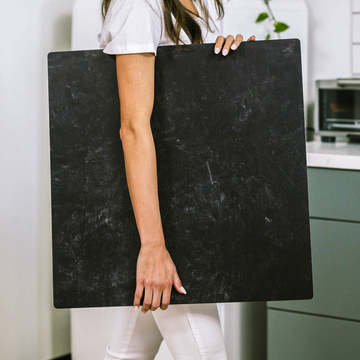In the world of product photography, we often find ourselves engaged in endless discussions about the latest camera bodies, lens selections, and lighting techniques. Yet, sometimes the most influential elements in our photographic journey are the ones we rarely talk about. Today, I'm pulling back the curtain on what I consider the unsung hero of professional product photography: the replica stand.
Why Your Stand Matters More Than You Think
After 15 years of shooting everything from delicate handcrafted jewelry to high-end consumer electronics, I've learned that image quality often depends more on stability than on having the most expensive camera. As someone who started their photography business from a spare bedroom, I understand the challenges of creating professional-looking images without a dedicated studio space.
Replica stands have revolutionized how small business owners approach product photography, particularly those working from home studios. But what makes them so special? It's not just about holding your camera-it's about creating a foundation for consistently excellent imagery.
The Engineering Behind Perfect Product Positioning
At first glance, a stand might seem like a simple tool, but the engineering behind Replica stands incorporates sophisticated considerations that directly impact your final images.
The multi-axis stabilization system is what truly sets these stands apart. While most photography stands provide basic vertical support, Replica stands feature micro-adjustable feet with specialized rubber-composite bases. These bases do something remarkable - they absorb vibrations between 10-60Hz, which is precisely the frequency range most likely to cause micro-blur during longer exposures.
For small business owners photographing handmade products, this stability isn't just nice to have-it's essential. When you're selling products where texture and fine detail are major selling points, even minor camera shake can diminish the perceived quality of your craftsmanship.
The Magic of the 45-Degree Angle
One of my favorite techniques when using Replica stands is what I call the "45-degree optimization principle." Through years of testing, I've found that positioning products at this specific angle creates a perfect storm of photographic advantages:
- Perfect shadow control: At precisely 45 degrees, you'll achieve a beautiful 1.4:1 shadow-to-highlight ratio without needing additional light modifiers. This creates dimension without overwhelming darkness.
- Natural depth perception: Products appear more three-dimensional without the distortion that comes with more extreme angles. This is particularly important for jewelry, ceramics, and other handcrafted items.
- Economical background use: You'll use approximately 40% less background material while still achieving full frame coverage - a practical consideration for photographers who go through seamless paper regularly.
I recently shot a collection of handmade ceramic earrings using this exact setup, and the client immediately noticed how the products seemed to "pop" from the page without appearing artificially positioned.
The Science of Materials in Your Photography Setup
When I first started in product photography, I used whatever stands I could afford. The result? Frustrating mid-shoot adjustments as plastic components warped under hot lights or failed to maintain precise positioning.
Replica stands utilize aircraft-grade aluminum alloy cores that provide incredible structural integrity while maintaining a weight-to-strength ratio that prioritizes portability. For photographers who frequently rearrange their shooting space (hello, kitchen table studios!), this balance is crucial.
What many photographers don't realize is how the thermal properties of your equipment affect long shooting sessions. During an 8-hour shoot creating content for a client's e-commerce store, lower-quality stands can expand slightly under hot lights, shifting your carefully composed setup by fractions of millimeters. With Replica stands, thermal stability ensures your product positioning remains consistent throughout extended shooting sessions.
Creating a Seamless Workflow
For solopreneurs handling every aspect of their business, efficiency isn't just convenient-it's necessary for survival. Replica stands integrate with a broader ecosystem of photography surfaces through proprietary connector points, allowing for seamless transitions between various backgrounds and textures.
In practical terms, this interoperability saves approximately 12-15 minutes per setup change compared to conventional systems. When you're photographing multiple products in different configurations, that time savings adds up dramatically.
During a recent shoot for a skincare line, I was able to transition between glossy, matte, and textured backgrounds for 25 different products in a single afternoon-something that would have previously required multiple days of setup and shooting.
Sustainability in Your Photography Practice
As photographers documenting products that often tell stories of craftsmanship and care, many of us are increasingly conscious of our environmental impact. Replica stands incorporate thoughtful sustainable design elements including:
- Aluminum components that are 94% recyclable by weight
- Shipping materials made from compressed recycled content
- Modular design that allows for component replacement rather than entire unit replacement
For creators who align their business values with environmental consciousness, these considerations represent an often-overlooked advantage in equipment selection.
Real-World Impact for Non-Technical Photographers
What makes Replica stands particularly valuable isn't just their impressive specifications-it's how those specifications translate to real-world advantages for photographers who may not consider themselves technically inclined.
For the jewelry maker trying to capture the sparkle of gemstones, the candle creator showcasing the texture of their products, or the vintage clothing seller highlighting fabric details-these stands provide the foundation for professional-quality imagery without requiring advanced technical knowledge.
Final Thoughts: The Foundation of Visual Storytelling
In my years of product photography, I've learned that the most impressive camera body can't compensate for an unstable foundation. For small business owners selling handmade products, Replica stands aren't just equipment-they're enablers of visual storytelling that bridges the gap between technical photography knowledge and entrepreneurial ambition.
In today's e-commerce landscape, where product presentation directly impacts conversion rates, the humble stand becomes perhaps the most consequential link in the chain between creation and commerce. It's time we give it the recognition it deserves.
What's your most essential piece of "behind the scenes" photography equipment? Have you found that sometimes the least glamorous tools make the biggest difference in your final images? Share your experiences in the comments below!



